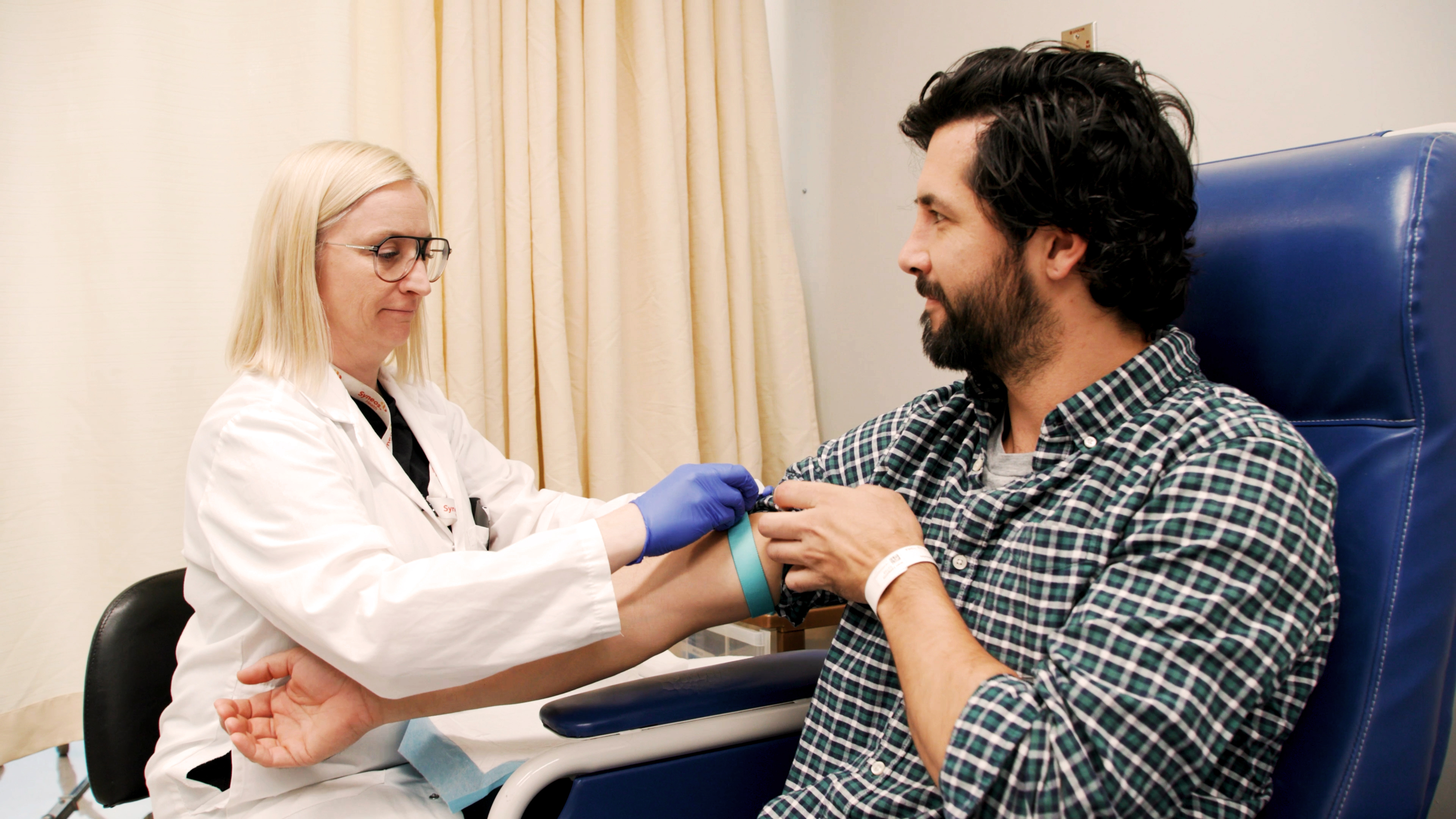Why Early Patient Advocacy Matters: What Pharma Can Learn from Brand Loyalty
What if clinical trial teams approached patient recruitment the way consumer brands approach customer acquisition -- as the beginning of a long-term relationship?
C-level pharma leaders face mounting pressure: Clinical trial recruitment is slow, dropout rates are high and launch readiness often lags behind approval. In an era of tighter margins and precision pipelines, it’s important to regard clinical trial experience as a strategic business asset.
Here’s the question pharma rarely asks: If patients had options, would they choose your trial?
Want more strategies for smarter recruitment and stronger retention? Explore how pharma leaders are rethinking trial design, digital engagement and advocacy partnerships.
Today’s clinical trial participants are informed, connected and increasingly selective. And yet, many clinical development teams still approach recruitment as a transaction rather than the start of a relationship.
It’s time to borrow a page from modern consumer strategy. Syneos Health patient advocacy experts Meredith Wilson, Executive Director and Tiffany Cook, MS, CCC-SLP, Senior Director of Advocacy and Patient Affairs, break down how pharma development teams can reframe their engagement strategy to reach modern patients by creating positive experiences that inspire trust, confidence and long-lasting engagement.
Brand Loyalty Begins Before the Label
In high-performing industries, brand loyalty drives growth. It’s earned through relevance, experience and trust. Clinical trials are no different.
When patients feel understood and supported, from protocol design to digital touchpoints, they’re more likely to stay engaged. Early involvement of patients, patient advocates and patient communities improves protocol feasibility, reduces costly amendments and builds the foundation for long-term trust.
Case in point: Today’s regulatory and HTA requirements and expectations are shaped by a decade of evolving practices and learned successes. Regulatory bodies such as the EMA, FDA, MHRA and Health Canada continue to raise the bar, advocating for more patient-partnered approaches. The newly updated ICH E6(R3) Good Clinical Practice Guidelines explicitly underscore the importance of incorporating the perspectives of key stakeholders such as patients, patient communities, advocacy organizations and healthcare professionals into the design and conduct of clinical trials. Their early involvement can enhance trial feasibility, reduce operational complexity and ensure the outcomes resonate with what truly matters to patients.
Companies that proactively embed patient perspectives throughout the clinical development journey are better positioned for regulatory and HTA success. They not only improve their chances of achieving favorable submissions and value assessments but also foster meaningful, trusted relationships with patient communities. Embracing this approach transforms clinical development into a more relevant, efficient and compassionate process.

Every Trial Touchpoint Is a Trust Point
Every successful brand starts with a deep understanding of its customer. For pharma, that customer is the patient, but too often, clinical trial design happens in isolation, without truly engaging them. The result? Protocols that may look robust on paper but falter in practice. Patient engagement is not a formality, it’s strategic intelligence.
When involved early, patients can help shape eligibility criteria, visit schedules and endpoints to reflect their lived experiences. This alignment reduces the need for costly protocol amendments, improves recruitment velocity and enhances retention which are key factors in meeting development timelines and controlling budgets.
Just as market research drives product development in other industries, patient insight must inform clinical protocol development. It’s the foundation for building brand equity well before a product reaches the market. If trials don’t feel designed with patients in mind, what does that say about the therapy’s relevance to their lives?
Every patient interaction, from first contact to the final visit, shapes perception. Unclear communication, culturally mismatched site experiences or inconsistent follow-up erode trust. And patients don’t keep quiet, they share their experiences.
Retention is more than an operational key performance indicator, it’s a reflection of patient trust with potential impacts on both trial completion and post-launch adoption. In a world where perception shapes behavior, early and sustained patient involvement isn’t optional, it’s essential.
From Transactional to Transformational: Advocacy as a Commercial Asset

Let’s be clear: patient loyalty doesn’t begin at launch, it starts during clinical research. A participant’s experience with your trial is not separate from your product’s lifecycle, it’s the foundation of long-term brand equity and future market success.
When patients have a positive trial experience they become more than data contributors. They become advocates, storytellers who influence caregivers, healthcare providers and entire communities. Their voices shape community perception — a key driver of uptake, especially in rare and stigmatized conditions.
Too often, companies treat the transition from trial to commercialization as a handoff. The most successful brands build continuity by carrying insights from early patient engagement into support services, messaging, access programs and even label development. Advocacy isn’t an afterthought. It’s a throughline.
Advocacy-informed design offers a strategic pathway to optimize recruitment, retention and launch preparedness. Patient loyalty must be earned early, waiting until approval is simply too late.
From Siloed to Strategic: Rethinking Organizational Ownership
To truly build brand loyalty during clinical development, companies must rethink how they define and distribute ownership. Too often, patient engagement lives in silos—confined to advocacy teams or community relations. But if loyalty is to be built through the trial experience, it must be a cross-functional mandate.
That means:
- Clinical operations embedding patient-informed endpoints and participant burden-minimizing designs.
- Commercial leads engaging early in trial planning to ensure experience aligns with post-approval messaging.
- Patient advocacy positioned as a strategic driver — not a downstream add-on.
The Bottom Line
Clinical trials are more than data collection, they are relationship-building moments. When ownership is shared, trials become platforms for trust, loyalty and launch readiness. It’s not a question of if it matters—it’s whether your organization is structured to make it happen.
Contact us to explore how patient-driven design can accelerate your next program.
Contributors
Meredith Wilson | Executive Director, Advocacy and Patient Affairs
Tiffany Cook, MS, CCC-SLP | Senior Director, Advocacy and Patient Affairs



